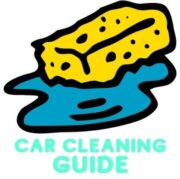Last Updated on October 2, 2023 by Chase Manhattan
Buying a used car can be an overwhelming process, especially if you’re doing it for the first time. You might have many questions, such as where to begin, what to look for, and how to know if you’re getting a good deal. As someone who has navigated this road before, I hope to shed some light on this often confusing and complex process.
To be clear, a used car is a vehicle that has been previously owned and driven. It could be a couple of years old with just a few thousand miles on the odometer, or it could be a decade-old vehicle with well over 100,000 miles. The point is, it’s not new, and it comes with its own set of considerations.
In this article, we’ll discuss the pros and cons of buying a used car, share a grass roots story of the used car buying experience, provide you with a comprehensive used car buying checklist, and give you some essential tips to buy a used car.
So let’s get rolling into it!
- How to Clean Car Carpets Quick and Easy - July 10, 2024
- Can You Touch Up Clear Coat? Yes and No (Here’s Why) - November 25, 2023
- How To Wax A Car By Hand: A Comprehensive Guide - November 14, 2023
Quick Navigation
A Grass Roots Story: The Used Car Buying Experience
As someone who has purchased a used car, I can attest to the mixed emotions that come with the process. On one hand, the prospect of finding a hidden gem at a bargain price was thrilling. On the other hand, the fear of ending up with a lemon was always lurking in the back of my mind.
Despite the initial apprehension, I decided to take the plunge. I did my research, armed myself with a used car buying checklist, and enlisted the help of a knowledgeable friend. The search was exhaustive, but after visiting several dealerships and private sellers, I found what I was looking for. On top of that, it happened to be nearby at Schumacher Used vehicles in New Jersey – where i lived at the time.
The car was a few years old with a clean history, reasonable mileage, and was well within my budget. The inspection went smoothly, thanks to my used car inspection checklist, and I drove home feeling confident about my purchase.

Why Consider Buying a Used Car?
There are several reasons why people consider buying a used car. For starters, it’s generally cheaper than buying a new one. A new car starts depreciating the moment you drive it off the lot. By opting for a used car, you let the original owner absorb that initial depreciation hit.
Another reason is the variety available. The used car market is vast and diverse, offering a wide array of makes, models, and years. This diversity allows you to find a car that perfectly matches your needs, preferences, and budget.
Additionally, buying a used car can be more environmentally friendly. It reduces the demand for new cars, which in turn reduces the resources used for production.
The Potential Downsides of Buying a Used Car
While there are undeniable benefits to buying a used car, it’s important to acknowledge the potential downsides. One of the main concerns is reliability. Even with a thorough used car inspection checklist, it’s hard to predict how a used car will perform over time.
Another downside is that used cars often come with fewer warranties and protections. While some used cars may still have part of their original warranty, or have the option for an extended warranty, many others may not.
Lastly, used cars can have hidden problems. Unseen issues like rust, leaks, or electrical issues can turn your bargain into a money pit. This is where a thorough inspection and a comprehensive used car buying checklist can come in handy.
Pros and Cons Comparison: Used vs New Cars
In this section, I’ll go into more detail about the potential downsides (cons) of buying a used car, but I’ll also provide the positives (pros) and then compare it to the pros and cons of buying a used car vs new.
| Factor | Used Car | New Car |
|---|---|---|
| Initial Cost | Lower initial purchase price. | Higher initial purchase price. |
| Depreciation | Slower depreciation, less value loss. | Faster depreciation, higher value loss. |
| Reliability | Potential unknown history, may have wear and tear. | Comes with the latest technology and features, less likely to have issues initially. |
| Maintenance Costs | Generally higher maintenance costs, older parts may require replacement. | Lower maintenance costs, covered by warranty for a few years. |
| Warranty Coverage | Limited or no warranty, potential costly repairs. | Comes with a manufacturer's warranty, covering repairs for a specific period. |
| Customization Options | May have aftermarket modifications or personalized features. | Full range of customization options available from the dealer. |
| Fuel Efficiency | May have lower fuel efficiency due to older technology. | Newer models often boast better fuel efficiency. |
| Insurance Premiums | Generally lower insurance premiums. | Higher insurance premiums due to higher value. |
| Technology & Features | May lack the latest tech and safety features. | Equipped with the latest technology and safety features. |
| Environmental Impact | Potential for higher emissions, less eco-friendly. | Typically more eco-friendly with advanced emissions standards. |
| Availability | Wide selection of models and years available. | Limited availability of the latest models. |
Comparison Summary:
- Used Car Advantages: Lower initial cost and slower depreciation make used cars attractive for budget-conscious buyers. There is a wide selection of models available, and some may come with aftermarket modifications.
- Used Car Drawbacks: Reliability can be a concern due to potential unknown history and wear and tear. Maintenance costs are generally higher, and there may be limited or no warranty coverage, leading to potential costly repairs.
- New Car Advantages: New cars come with the latest technology, safety features, and customization options. They are more reliable initially and have lower insurance premiums. Environmental impact is usually lower due to newer emission standards.
- New Car Drawbacks: The higher initial cost and faster depreciation result in significant value loss in the first few years of ownership. Limited availability of the latest models may restrict choices for some buyers.
Essential Tips to Buy a Used Car
When buying a used car, there are several key tips to keep in mind. First, define your budget. Knowing what you can afford will guide your search and negotiation process.
Secondly, do your research. Identify the makes and models that suit your needs, then research their market values, common issues, and maintenance costs.
Thirdly, use a buying a used car checklist. This will help you remember the important things to check during the inspection process.
Lastly, don’t rush. It may take time to find the right car at the right price. Be patient and persistent, and you’re more likely to find a good deal.
The Used Car Buying Checklist: What You Need to Know
A used car buying checklist is an essential tool that can help you avoid common pitfalls. It should include things like checking the car’s history, inspecting the exterior and interior, checking under the hood, and taking the car for a test drive.
Additionally, you should consider having a professional mechanic inspect the car. They can spot potential issues that you might miss and can provide an unbiased assessment of the car’s condition.
Remember, the goal of the checklist is to help you gather as much information as possible to make an informed decision.
How to Shop for Used Cars: A Step-by-Step Guide
Shopping for a used car can be intimidating, but it doesn’t have to be. Start by defining your needs and budget. Next, research potential makes and models, and their market values.
Once you have a list of potential cars, start visiting dealerships or private sellers. Be sure to bring your used car inspection checklist and take the car for a test drive.
If you find a car you’re interested in, consider having it inspected by a professional mechanic. Finally, negotiate the price. Remember, it’s a process that requires patience and persistence.
Inspecting a Used Car: The Ultimate Checklist for Buyers
When inspecting a used car, there are several things to look out for. My used car inspection checklist includes checking the car’s history report, the exterior for signs of damage or rust, the interior for signs of wear and tear, under the hood for signs of leaks or damage, and the tires for adequate tread and wear.
The test drive is also a crucial part of the inspection process. Pay attention to how the car drives, any unusual noises, and how the brakes feel.
Having a professional mechanic inspect the car is another valuable step in the process. They can help identify potential issues and provide an informed opinion on the car’s overall condition.
Final Thoughts: Is Buying a Used Car Right for You?
After weighing the pros and cons, the decision to buy a used car ultimately depends on your personal circumstances and preferences. If you’re willing to put in the time and effort to research, inspect, and negotiate, buying a used car can be a cost-effective and rewarding experience.
However, if you’re looking for the peace of mind that comes with a new car warranty and don’t want to deal with potential maintenance issues, buying new might be the better option for you.
Otherwise, if you’re still questioning your decision, I recommend checking out this video to get a better understanding for each option – but from a third party.
Used vs New Comparison and Overview Video
Conclusion
Buying a used car can be a smart financial decision if done right. It requires thorough research, a comprehensive used car inspection checklist, and a good amount of patience. But with the right approach and tools in hand, you can navigate the process with confidence and hopefully find a used car that suits your needs and budget.
Remember, the key is to be informed, patient, and thorough in your inspection, and not to shy away from asking for professional help when needed. Happy car hunting!
FAQs Below
FAQs and Related Questions
Do used cars come with a warranty?
Unlike new cars that come with a manufacturer’s warranty, used cars often have limited or no warranty coverage. Buyers may have the option to purchase extended warranties or seek certified pre-owned cars that come with limited warranty protection.
What are the downsides of purchasing a used car?
Some drawbacks of buying a used car include potentially higher maintenance costs due to older parts, limited or no warranty coverage, and the risk of unexpected repairs. Additionally, used cars may lack the latest technology and safety features found in newer models.
How much can I save by buying a used car compared to a new one?
On average, used cars cost significantly less than new cars. The exact amount of savings depends on the make, model, age, and mileage of the used car. It is not uncommon to save thousands of dollars by opting for a used car over a new one.
Are used cars reliable?
The reliability of used cars can vary depending on factors such as the car’s age, maintenance history, and overall condition. While some used cars can be very reliable, others may have unknown histories and potential wear and tear, making thorough inspections crucial before purchase.
What are the benefits of buying a used car?
Purchasing a used car comes with several advantages, including a lower initial cost, slower depreciation, and a wide range of models and years available to choose from. Used cars can be a cost-effective option for budget-conscious buyers.


